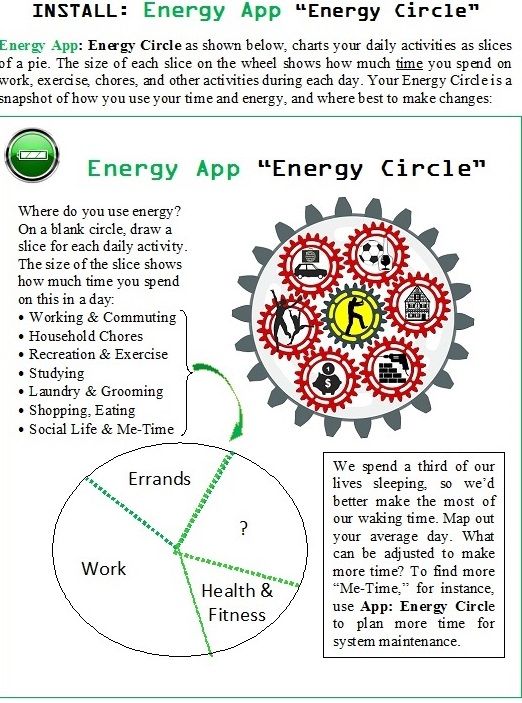Career
Work-Life Balance and Your Energy Circle
Balance begins with a scan of your daily activities to find more "me time."
Posted October 12, 2019 Reviewed by Jessica Schrader

“Work-life balance” describes the equilibrium between the demands of “work,” and the activities that make up the rest of our lives. “Work” may represent working for income, but also includes caring for loved ones, and performing other essential activities. We each need quality personal time outside of work. Yet it's not always easy to reconcile your personal life with things you must do.
Before we can balance work with life, we need to establish the starting point. Ask yourself: How much of my energy goes to me and my family/friends, compared with time spent working?
Workplace policies are one factor in this equation for many employees. Work-life balance policies are important to businesses hoping to boost worker morale and avoid burnout. Programs such as paid leave, flex-time, or on-site daycare, help employees navigate between work and non-work activities. Workplace policies that create better work-life balance helps companies to retain good workers. How does your workplace measure up? Check with your workplace to see if flextime and/or working remotely are available options for you.
It is not work but rather the pursuit of things outside of work that are often the most rewarding. From travel to family time, personal time, socializing, volunteering, and other recreation, these activities are enriching. However, many are of us are so bound to work and essential chores that we don't create enough free "me time" to enjoy these experiences.
Work-life balance does not mean an equal balance. Is it realistic to think you can schedule equal hours for work versus personal activities? We save for future “days off.” But life never takes a day off, and you only get so many days, so it’s better to squeeze as much time as we can out of each day. Here is one way to look at this issue.
Scanning how you use your time. A day gives us 24 hours. You must sleep (adults need seven to eight hours of sleep per night for optimum health and productivity). Subtract hours for sleep (according to your pattern). How much time is left? Next, how much time do you spend “working?” Don’t forget commuting, overtime, or other work-related activities (e.g., emails from home). What’s left to balance with the rest of your life?
The goal is to find time for “life” outside of your typical pattern of working, chores, and caregiving. Perform the scan below. Once you do the following exercise, you will be more mindful of how you spend your precious time. Stay tuned for an upcoming post with time-saving life hacks.



